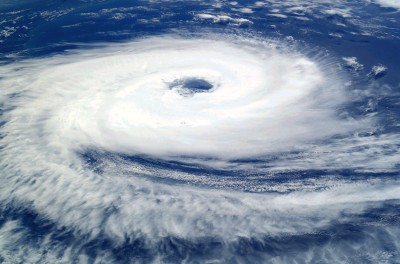Cyclone Watch in Australia
Townsville, North Queensland

The curious, sweaty mammals of North Queensland in Australia are bracing themselves for yet another cyclone with an anodyne name. Cyclone Debbie might have impressed you as a person who turns up at the door asking for donations for the Red Cross Appeal. But cyclones are rarely disposed to sweetness, featuring in a serious of catastrophes that have affected various continents. The door is not so much knocked upon and fully blown open, along with roofs and dangerous objects finding their way across cities and suburbs. The only moral in this: stay indoors as much as you can.
As a review for PLOS Current Disasters begins,
“Cyclones have significantly affected populations in Southeast Asia, the western Pacific, and the Americas over the past quarter of a century.”[1]
Australia has also been privileged (dare one use that word?) to receive some of nature’s more tempestuous phenomena in that sense. Repeatedly, this ancient continent has been battered by weather systems that have either brought considerable drought, drenching floods, incinerating bush fires, or eviscerating storms.
Debbie has a bit of work to do before heading into the dizzying heights of Cyclone Yasi, which hit Queensland in 2011 in what was to be the highest category on the cyclone spectrum. When it did its good deal of damage, it was deemed one of the most powerful storms to have made landfall since humans decided to take records of such events on the Australian continent.[2]
Before Debbie develops, however, she was a less than conspicuous “tropical depression,” as the Australian Bureau of Meteorology tends to term it. Care must to be taken to observe the Tropical Cyclone Advice Numbers as to whether this depression deepens into a gloomy meteorological nightmare, which looks like a gorgeously moving animal of vapours and clouds on the charts.
Advice Number 4, in particular, issued on Saturday, March 25, before 5 a.m., is a tantalising picture of doom, seductively arresting yet imminently terrifying. Some of the locals have been busying loading up with sandbags; others have been just as busy sipping beer and observing the still ocean from sea fronts that will be shortly inundated.
The course of the cyclone’s eye is noted in clinical language in the various warnings, with predictions about possible strength as it draws up strength from the sea. Scientific precision matches unpredictable content. What matters is that the more laboriously it moves and lumbers, the more dangerous it will be in resisting dissipation.
“The forecast path shown above is the Bureau’s best estimate of the cyclone’s future movement and intensity. There is always some uncertainty associated with tropical cyclone forecasting and the grey zone indicates the range of likely tracks of the cyclone centre. Due to the uncertainty in the future movement, the indicated winds will most certainly extend to regions outside the rings on this map. The extent of the warning and watch zones reflects this.”[3]
Erratic, uncertain, cheeky, the cyclone can be seen as an unpredictable insurgent, striking with deadly stealth against civilian populations. “The tropical low has moved slowly overnight while steadily developing.” Like a cacoon ready to break, the tropical “low is expected to develop into a tropical cyclone and adopt a west-southwest track today, bring it towards the north Queensland coast.”
Then came the announcement from the ABC news centre: “Tropical Cyclone Debbie has been declared!” Not exactly a time to bring out the fizz for a glorious environmental arrival, a celebratory urging on for a cataclysm, but the general sense in Australia at such events is much like an interest in an accidental conception. It may not have been intended, but we best deal with it.
By the evening of Saturday, the dreary language from the meteorologists assumes a sense of the inevitable. Progress is slow, which is exactly what no one wants to hear, except suicidal Millenarians keen to meet some curious cranky maker of their own belief:
“Tropical Cyclone Debbie is currently intensifying, and is now a category 2 cyclone. The system remains slow moving at the present time…. Conditions will remain favourable for the cyclone to develop further before landfall, which will likely be between Townsville and Proserpine on Tuesday morning.”
The rituals of readying one self for such an onslaught are familiar, and even peculiar, to those who have been living in this region for decades. For one, the shelves are emptied with pious ferocity. Stockland, as one of the shopping centres, is rapidly unstocked. Bottled water makes it out of the door with blurring speed by the thousands. Special sections in the Coles supermarket are assigned for cyclone purchases. Favourite foods include the reliable canned spam, a legend that persists in Australia as potent as any wartime tucker. To that can be added baked beans and canned tuna.
The essentials are religiously outlined in what a cyclone emergency kit should contain: radios, batteries, matches, candles, torches. Make sure you have your insurance documents. Ensure that you unplug appliances. The home itself is to be cleared of unnecessary debris on lawns, and potentially dangerous trees trimmed with scrutiny. Families congregate and have “cyclone parties”. Even before what seems like catastrophe, there is a true human calm before the ferociousness that is about to hit. Time to bolt the doors, close the windows and wait.
Dr. Binoy Kampmark was a Commonwealth Scholar at Selwyn College, Cambridge and lectures at RMIT University, Melbourne. Email: [email protected]
Notes
[1]http://currents.plos.org/disasters/article/the-human-impact-of-tropical-cyclones-a-historical-review-of-events-1980-2009-and-systematic-literature-review/
[2]http://www.australiangeographic.com.au/topics/science-environment/2016/02/australias-most-destructive-cyclones-a-timeline
[3]http://www.bom.gov.au/products/IDQ65002.shtml

